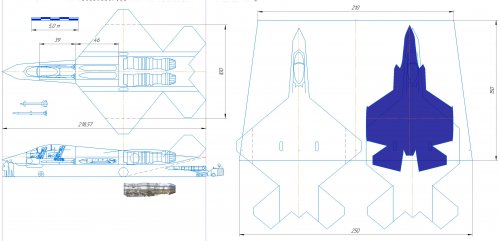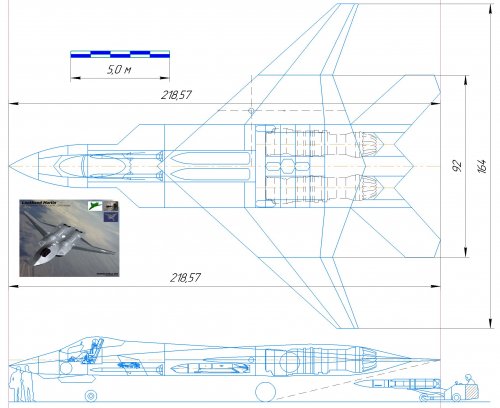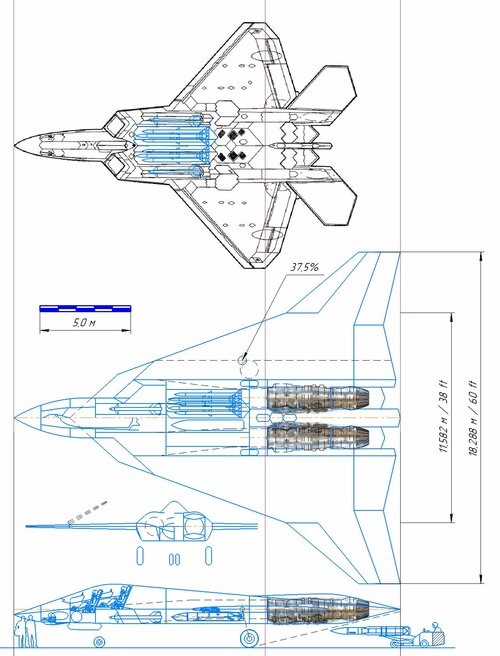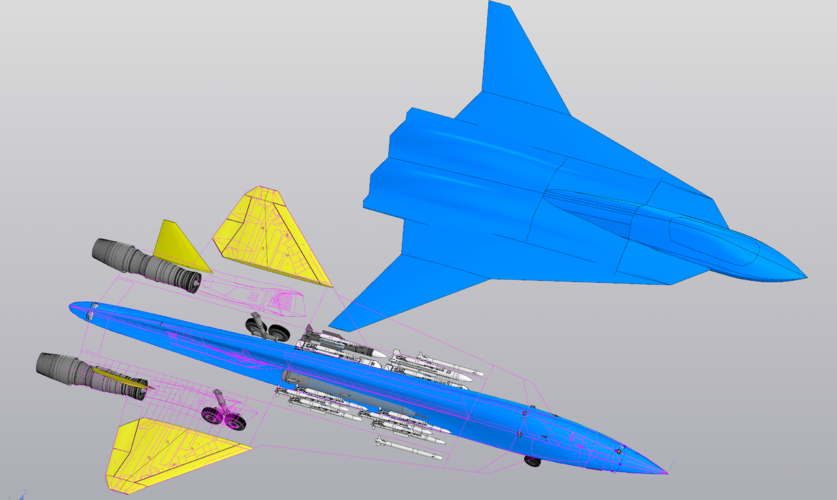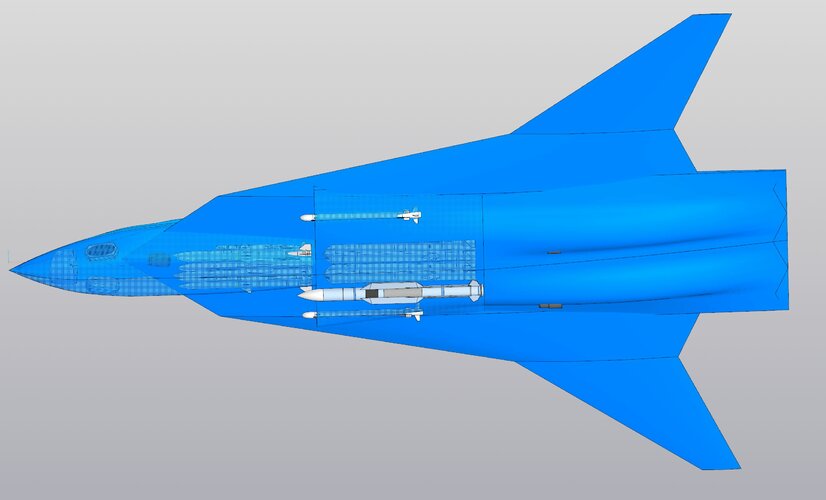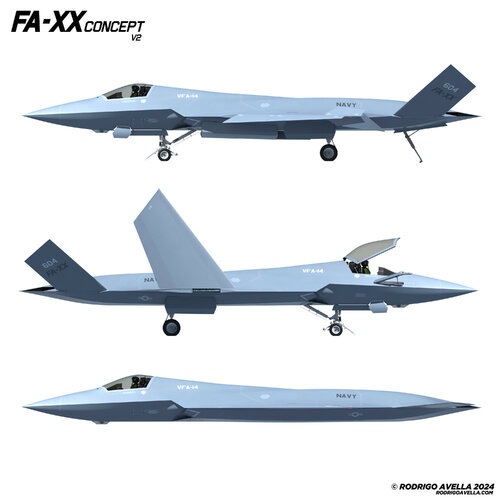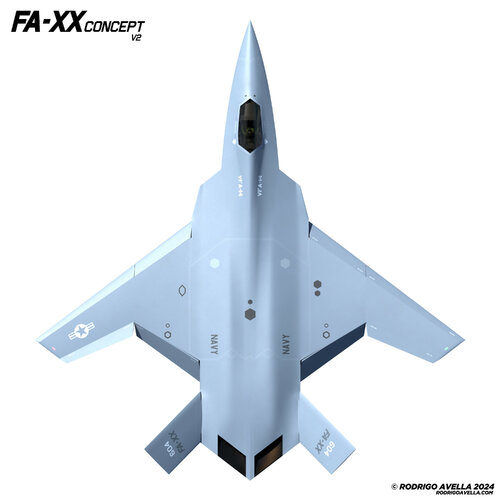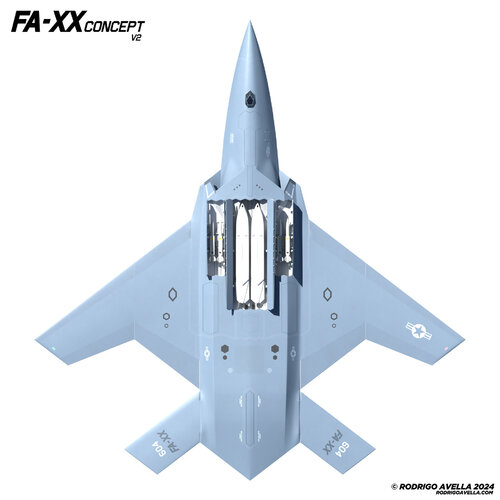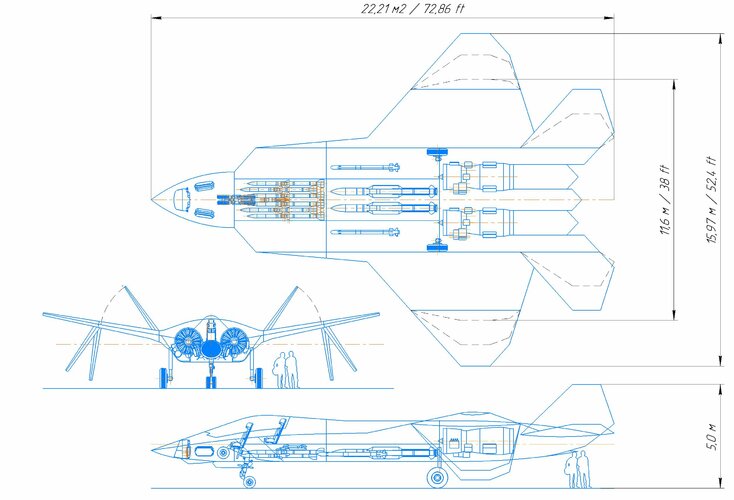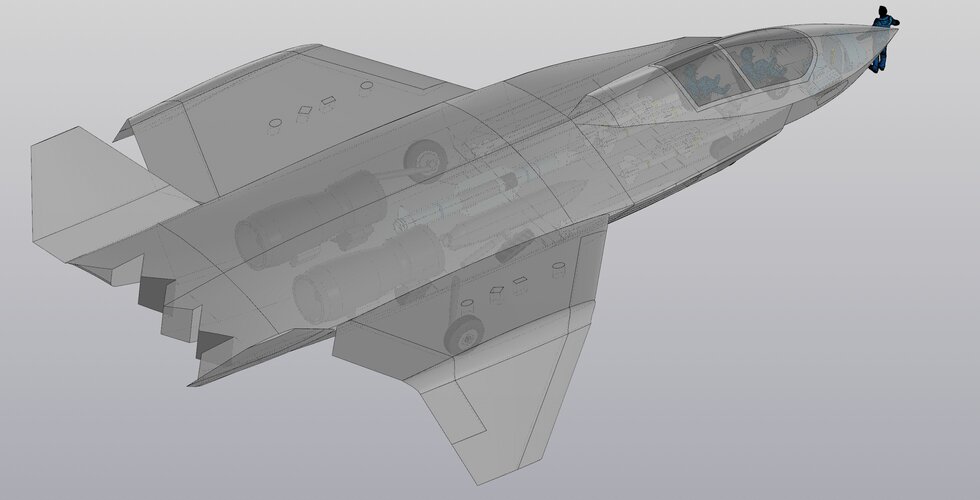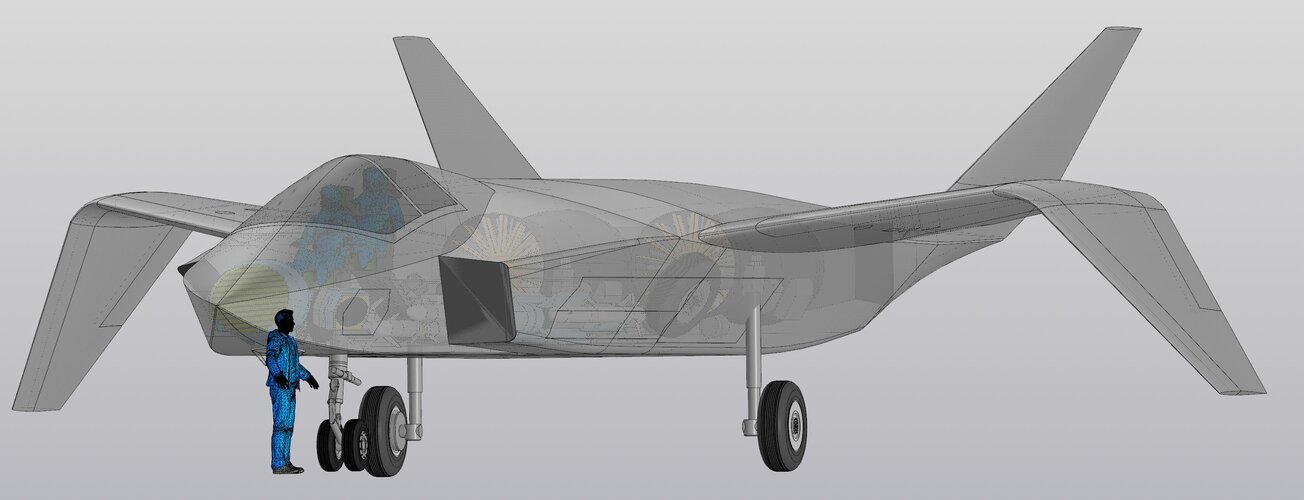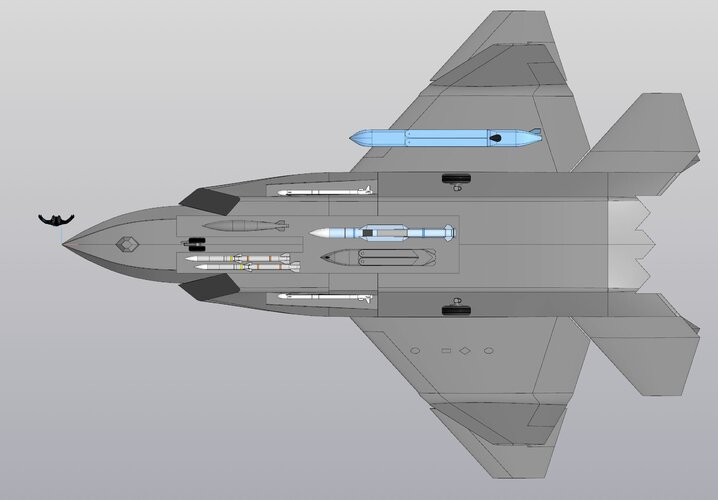The expected dimension of a promising fighter. The contours of the YF-23 while applied as the closest in volume. The right is inscribed in the dimensions of the lift of the aircraft carrier "Gerald Ford".
The second stage engine for the F-35 fighter will be the first stage engine for the promising F / A-XX.
Expected afterburner 20500 - 21500 kgf, 10% higher than the serial F135.
Take 47,000 lb / 21320 kgf
The predicted thrust-to-weight ratio of the sixth generation twin-engine fighter is no less than:
normal take-off weight 1.25
with a maximum take-off weight of 1.0
From here we get the maximum take-off weight of 21320 kgf * 2: 1.0 = 42640 kg, the normal weight of 21320 kgf * 2: 1.25 = 34112 kg.
Normal take-off weight F-22 * 1.5 = 33324 kg (75,000 lbs / 34019 kg)
The maximum take-off weight is F-22 * 1.25 = 42382 kg (94000 lbs / 42639 kg)
The 300-foot (91 m) LIM EMALS (aircraft carrier Gerald Ford) will accelerate a 100,000-pound (45,000 kg) aircraft to 130 knots (240 km / h; 150 miles per hour).
The radius of action is 38% higher than that of the F-22, that is, in the region of 1200 km (in-in) / 1640 km (in-s)
The volume of the load compartments is at least 8.6 - 11 m3 or 1.5 times more than that of the fifth generation fighter. Maximum combat load 42382 kg * 0.26 = 11000 kg
The second stage engine for the F-35 fighter will be the first stage engine for the promising F / A-XX.
Expected afterburner 20500 - 21500 kgf, 10% higher than the serial F135.
Take 47,000 lb / 21320 kgf
The predicted thrust-to-weight ratio of the sixth generation twin-engine fighter is no less than:
normal take-off weight 1.25
with a maximum take-off weight of 1.0
From here we get the maximum take-off weight of 21320 kgf * 2: 1.0 = 42640 kg, the normal weight of 21320 kgf * 2: 1.25 = 34112 kg.
Normal take-off weight F-22 * 1.5 = 33324 kg (75,000 lbs / 34019 kg)
The maximum take-off weight is F-22 * 1.25 = 42382 kg (94000 lbs / 42639 kg)
The 300-foot (91 m) LIM EMALS (aircraft carrier Gerald Ford) will accelerate a 100,000-pound (45,000 kg) aircraft to 130 knots (240 km / h; 150 miles per hour).
The radius of action is 38% higher than that of the F-22, that is, in the region of 1200 km (in-in) / 1640 km (in-s)
The volume of the load compartments is at least 8.6 - 11 m3 or 1.5 times more than that of the fifth generation fighter. Maximum combat load 42382 kg * 0.26 = 11000 kg

